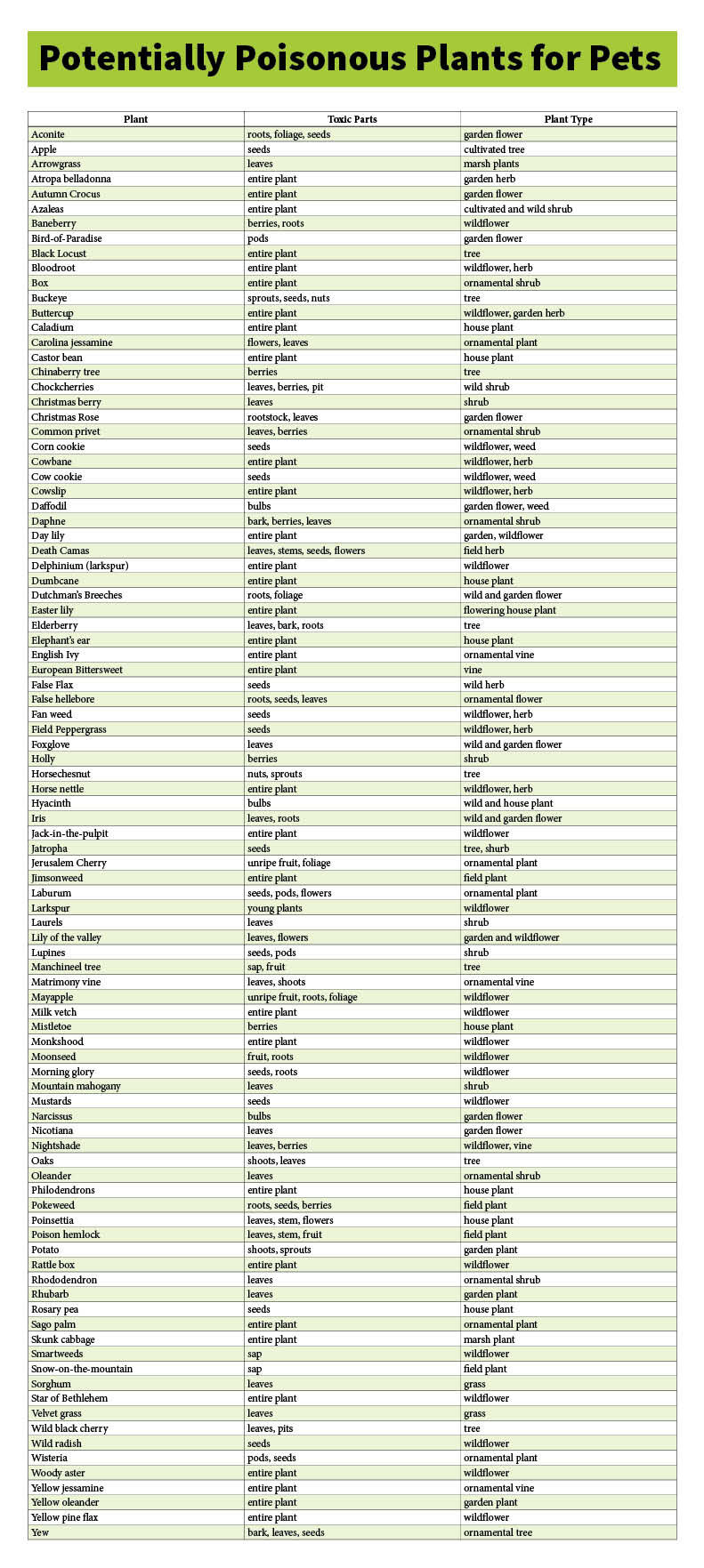Potentially Poisonous Plants for Pets
Cats love to explore. Dogs love to eat…anything—and the result isn’t always positive. Whether in your house or around your yard, it’s important to be able to identify potentially harmful plants for your pets.
Safety

Cats love to explore. Dogs love to eat…anything—and the result isn’t always positive. Whether in your house or around your yard, it’s important to be able to identify potentially harmful plants for your pets.
Signs Your Pet May Have Ingested a Toxic Plant
If your pet has been poisoned please contact the Pet Poison Hotline
Since many plants are irritants, especially for the gastrointestinal tract, most symptoms seen will be the result of irritation or inflammation, such as redness, swelling, or itchiness of the skin or mouth. If the toxin directly affects a particular organ, the symptoms seen will be related to that organ.
Keep an eye out for the following symptoms:
• Difficulty breathing (if the airways are affected)
• Drooling or difficulty swallowing (if the mouth, throat, or esophagus is affected)
• Vomiting (if the stomach or intestines are affected)
• Diarrhea (if the intestines or colon are affected)
• Excessive drinking and urinating (if the kidneys are affected)
• Fast, slow, or irregular heart beat (if the heart is affected)
To help as a quick reference or to refresh your memory, we’ve created a poisonous plants list, organized in alphabetical order.
As a note, the poisonous plant list below is not intended to be all-inclusive—only a compiling of the most frequently encountered plants that have negative systemic effects on dogs and cats.
To build a landscape safe for your pups, get started here.


